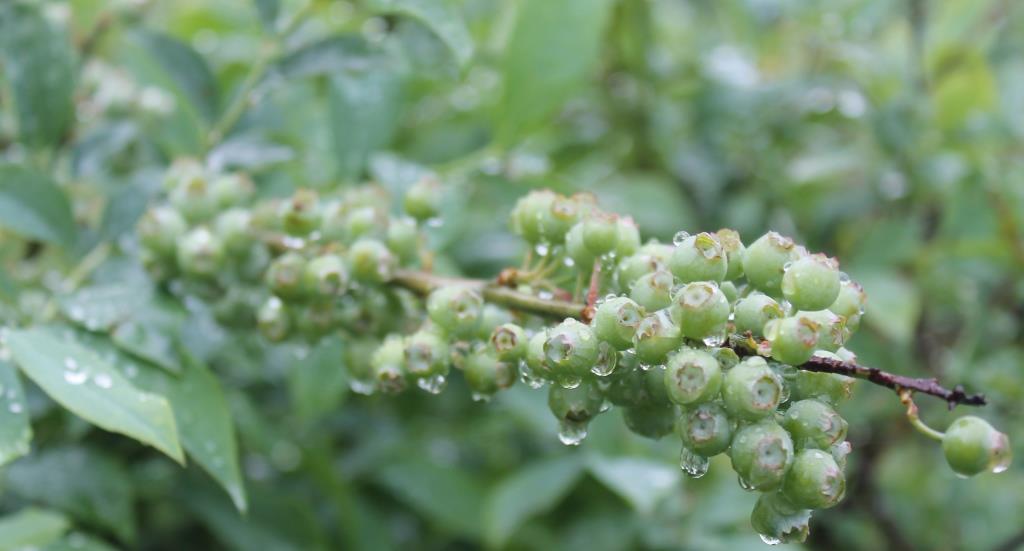
by Matthew Orwat | May 6, 2014
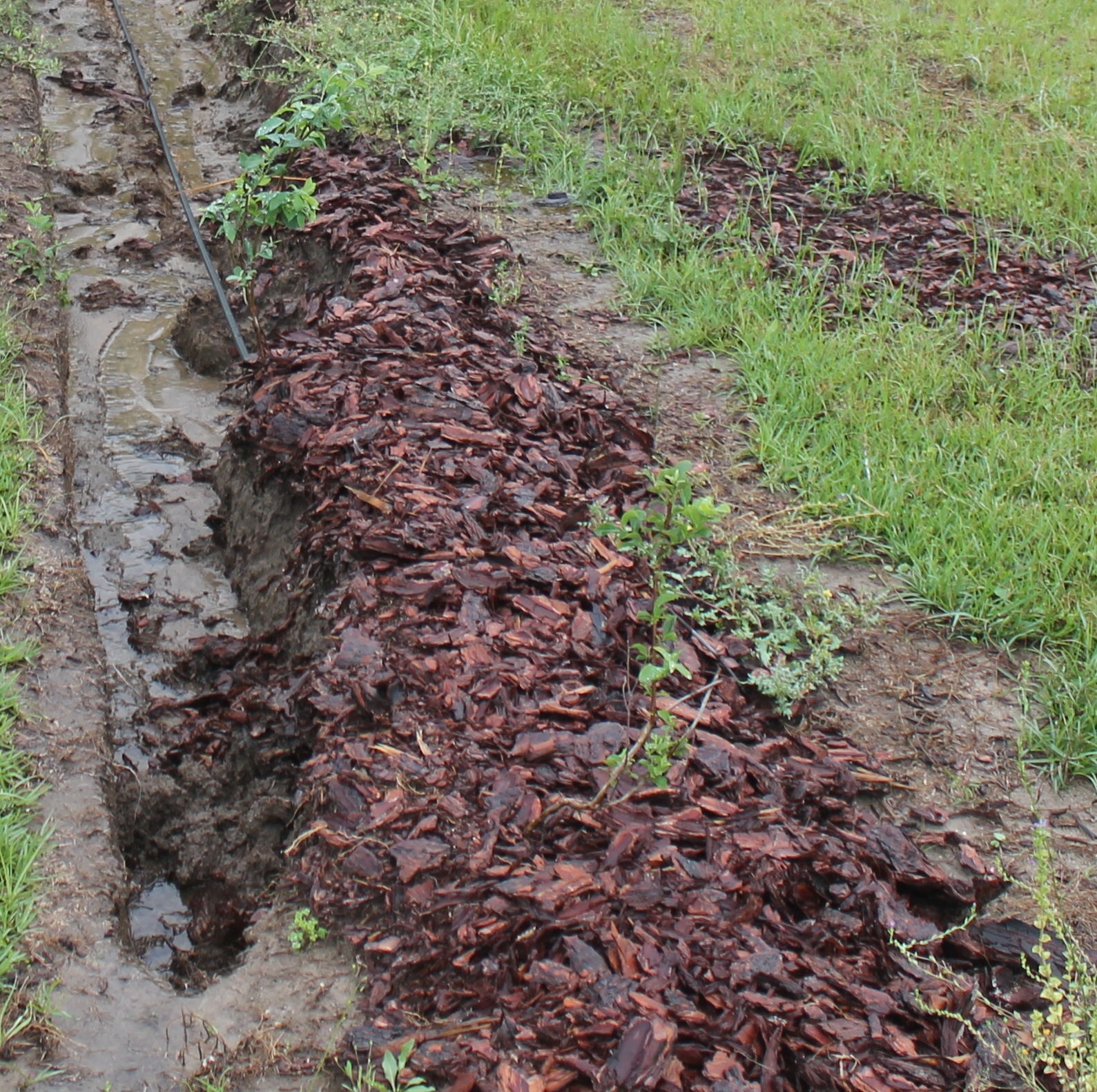
Wash-out in blueberry field, young planting. Image Credit Matthew Orwat
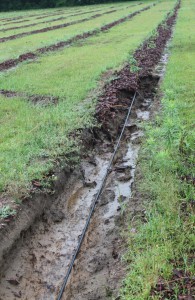
Washed out row in young blueberry field. Image Credit: Matthew Orwat
Although the central Florida panhandle has been hit with excessive rainfall this spring, the blueberry yield this year is on track to be above average. Colder winter temperatures coupled with wet spring weather has enhanced the yield potential of properly tended and well established planted blueberries. If you have a few established blueberry plants in your home orchard, the outlook looks bright. If you do not, don’t fret. There are plenty of U-Pick operations and local farmers market vendors that will have berries available June through July, at great prices!
Blueberries do best planted in low pH soil on slightly sloping ground. This prevents the collection of water and resulting root rot in areas with poor drainage. While this situation is ideal for established blueberry plants, this slightly sloping situation can cause issues for newly planted blueberries. Field wash-outs caused by excessive rainfall can wreck newly planted rows, because the pine bark added to the planting trench is less dense than soil.
After all this rain, what should the home gardener do to ensure a productive harvest this summer? Addition of fertilizer will help. Although blueberries usually require low fertilization rates, if leaves show yellowed edges, red spots or general yellowing, fertilizer may have leached out. Application of a few ounces of ammonium or urea based fertilizer around the root zone (24 inch) of established plants may be beneficial. It is a good idea to look for “Blueberry Special” blends or “Camellia & Azalea” fertilizer. To learn more about blueberry fertilization, consult the Blueberry Gardener’s Guide.
A drier May will help blueberries produce their greatest sweetness as they develop. Late May and June rains could cause fruit split, so less rain during this period is desired!

Blueberries developing for harvest, a month away. Image Credit Matthew Orwat
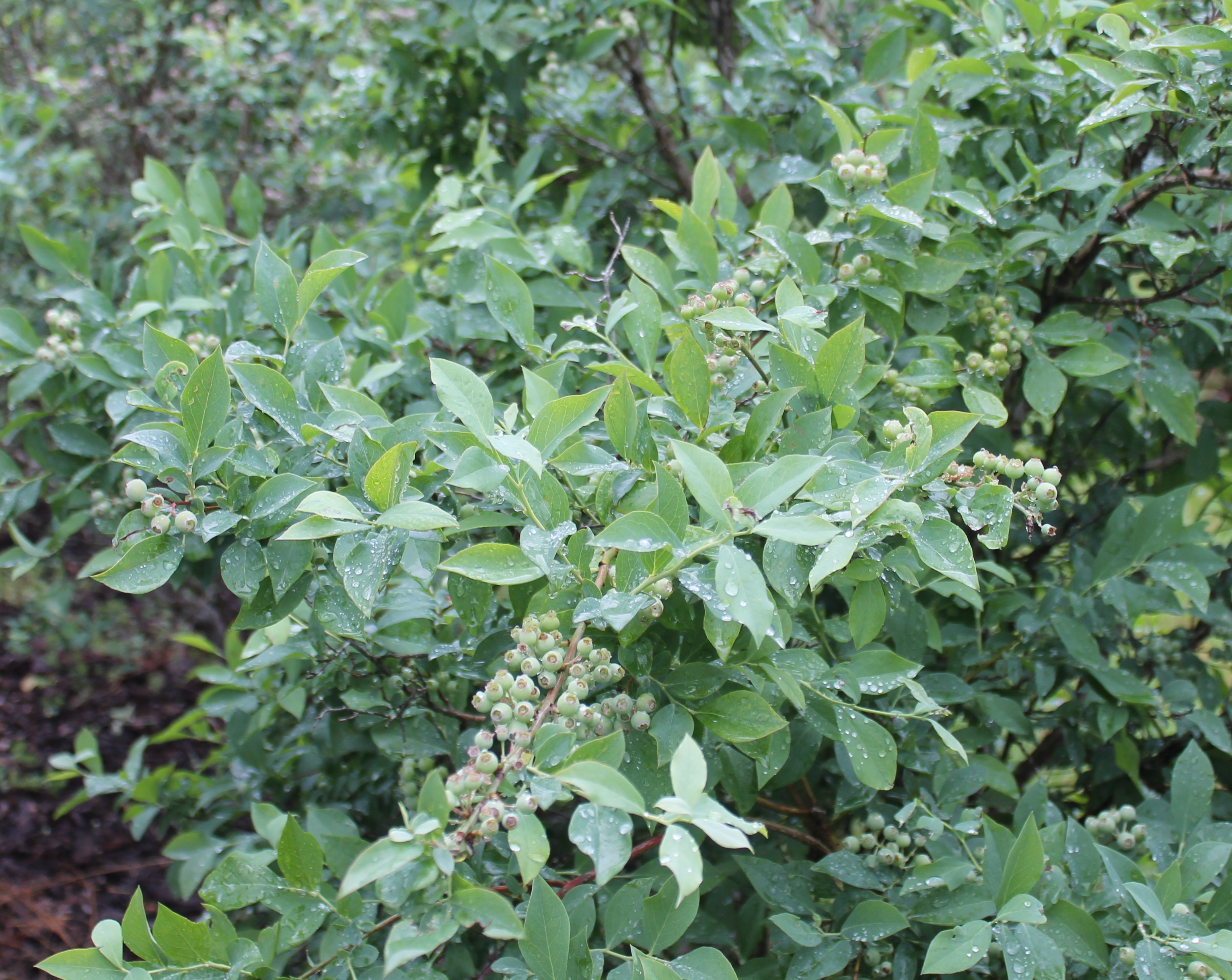
Blueberry bush, full of developing fruit. Image Credit Matthew Orwat
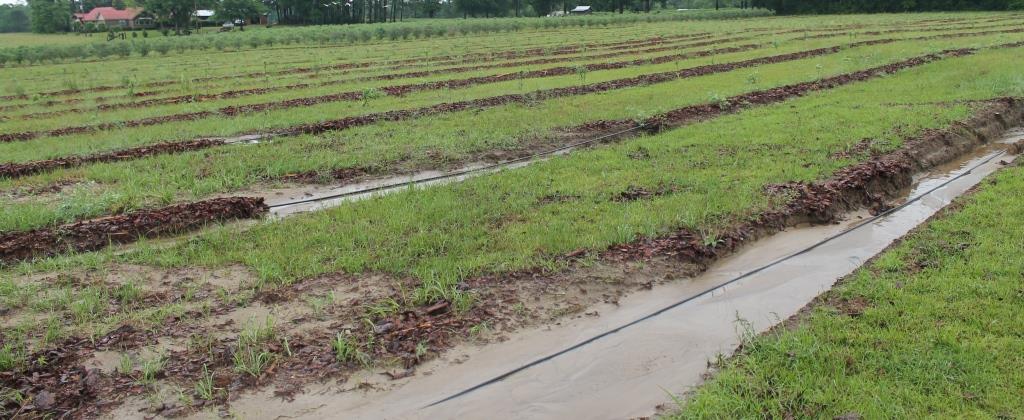
Washed out rows of young blueberries. Note healthy established plants in the background. No washout due to established root system. Image Credit Matthew Orwat

Emergency drainage ditch dug to reduce wash-out damage from field runoff. Image Credit Matthew Orwat
by Julie McConnell | May 3, 2014
The last week of April 2014 brought with it 10-22 inches of rain across the panhandle in a matter of days. Some areas had immediate flooding and standing water, while others may be in areas at risk of rising rivers and streams. As the water recedes, many people are wondering how all the water will affect their landscapes.
Only time will tell what the long term impact will be, but here are a few things to watch for and what you can do to try to moderate damage.
- Let soils dry out before driving vehicles or other equipment on grassy areas. Even if the water is not visible, if the soil is still saturated, driving lawn equipment or cars may cause ruts.
- Do not leave automatic irrigation systems running on established shrubs, trees, and lawns. If your system is set to run in the early morning hours, you may not think about it being on, check your systems and hold off on adding water until soils dry out and the plants need it.
- Watch for fungus symptoms and treat if needed. Wet plants and cool weather are ideal for some Brown Patch on lawns, be aware and monitor landscapes closely. If disease is suspected, contact your local county extension office for recommendation.
- When mowing, leave a longer leaf blade to compensate for root stress.
- Look at the base of trees and shrubs to make sure silt and sand have not buried the crown or root flare. Also look for erosion of root zone, these areas may need correction. “Salvaging Flood-Damaged Shrubs and Ornamentals.”
- Adjust fertilization as needed; if you recently applied fertilizer it has likely runoff or leached from the site. However, if you suspect fungal disease do not fertilize until disease is managed.
- Stress in turfgrass, for details read “Watch Turf for Flooding Stress”
- You may see new weeds (seeds or segments may have washed or blown into your yard)
- Tree and shrub decline or death read “We Had Plenty of Rain, Why are My Trees Dying?”
- Although this storm was not a hurricane, “Assessing Damage and Restoring Trees After a Hurricane” has helpful information for areas with wind damage
- Nutritional deficiency symptoms in palms may show up 4-5 months from now. “Nutrient Deficiencies of Landscape and Field-grown Palms in Florida.”
- Decreased availability and increased price of sod (flooded fields prevent harvest and increase inputs for disease, weed, and nutrition management)
- Scheduling changes or maintenance adjustments by landscape contractors. Turfgrass and ornamentals will likely need different maintenance applications than in years past to correct issues related to flooding and excess rain.






